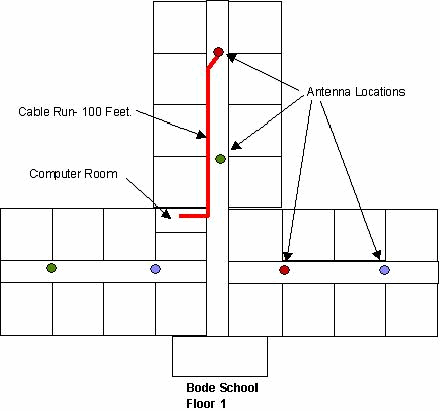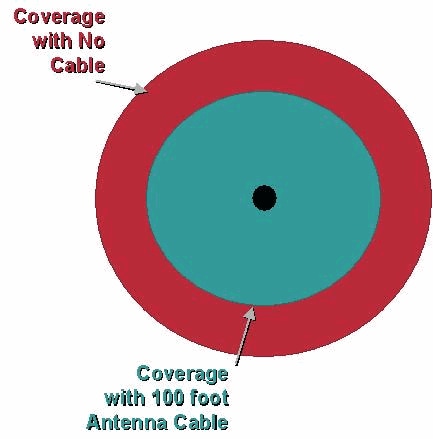Antenna Cabling
Available Languages
Contents
Introduction
This document provides information for the installation of antennas on Cisco Aironet products.
Prerequisites
Requirements
Cisco recommends that you have knowledge of these topics:
-
Aironet wireless products
-
Installation of wireless products
Components Used
The information in this document is based on these software and hardware versions:
-
Aironet access points (APs) and bridges
-
Aironet antennas and accessories
Conventions
Refer to Cisco Technical Tips Conventions for more information on document conventions.
Antenna Cable
You must place the antennas in a wireless network installation close to the users. The location of the antennas do not need to be close to the connected switch or to a computer room. The cable run can be 100 feet or more from the AP or bridge to the antenna locations.

A coaxial cable carries radio frequency (RF) energy between the antennas and the radio equipment. An antenna cable introduces signal loss in the antenna system for both the transmitter and receiver. In order to reduce signal loss, minimize the cable length and use only low-loss (LL) or ultra low-loss (ULL) antenna cable in order to connect radio devices to antennas.
RF coaxial cable = loss of signal strength
Loss of signal strength is directly proportionate to the length of the cable segment. As the diameter of the cable increases, signal loss decreases, but at a much higher purchase cost. As signal frequency increases (a higher-numbered channel), loss increases.
LL cable extends the length between any Aironet product and its antenna. With a loss of 6.7 decibels (dB) per 100 feet (30 meters [m]) for LL cable and 4.4 dB for the ULL cable, these cables provide installation flexibility without a significant sacrifice in range or performance.
Cisco offers these LL and ULL cables:
| Feature | AIR-CAB020LL-R | AIR-CAB050LL-R | AIR-CAB100ULL-R | AIR-CAB150ULL-R |
|---|---|---|---|---|
| Cable Length | 20 ft (6 m) | 50 ft (15 m) | 100 ft (30 m) | 150 ft (46 m) |
| Transmission Loss | 1.3 dB | 3.4 dB | 4.4 dB | 6.6 dB |
Note: The use of Cisco antennas and Cisco antenna cables with your Aironet wireless products ensures complete compliance with the requirements of these agencies:
-
FCC
-
European Telecommunication Standards Institute (ETSI)
-
Other regulatory agencies
Cisco LL and ULL cables are not plenum rated. Plenum rated cable is available from Times Microwave Systems ![]() .
.

A 100-foot cable can reduce the transmission distance by 30 percent. That 30-percent reduction in range translates to an approximate 50-percent reduction in coverage area (in square feet).

When you install antenna cables, be aware of these:
-
If you pull the coaxial cable too hard, its loss properties increase. You must treat coax with care.
-
Curves in coax must not exceed the specified bend radius of the manufacturer.
-
The longer the cable segment is, the higher the signal loss is over the full length of the cable. You can find the actual loss per foot in the specifications of the manufacturer for that cable.
-
If any copper wire passes from outside to inside a building, use lightning protection. Most countries require the use of lightning protection in this cases. Check the local building regulations.
-
For outdoor-mounted antennas, seal with a good material like Coax-Seal
 .
. -
Cisco has an Outdoor Bridge Range Calculation Utility to help you calculate power budgets.
Related Information
Contact Cisco
- Open a Support Case

- (Requires a Cisco Service Contract)
 Feedback
Feedback